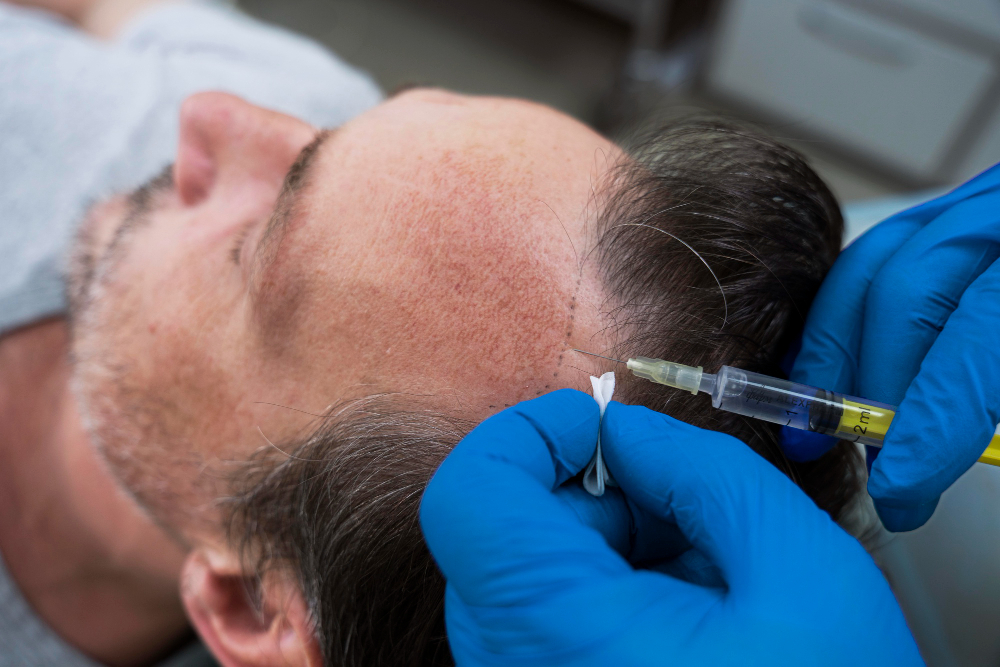
Losing hair can be a distressing experience for many individuals, affecting self-esteem and confidence. Fortunately, advancements in medical technology have made hair transplant procedures more effective and accessible than ever before. If you’re considering a hair transplant, navigating the various methods can be overwhelming. This guide aims to provide clarity on choosing the best hair transplant method tailored to your needs.
Understanding Hair Transplantation
Hair transplantation involves moving hair follicles from a donor site (usually the back or sides of the scalp) to the recipient area (where hair loss has occurred). The procedure aims to restore natural-looking hair growth in areas affected by balding or thinning.
Factors Influencing Method Selection
- Extent of Hair Loss: Different methods are suitable for varying degrees of hair loss. For instance, Follicular Unit Extraction (FUE) is ideal for smaller areas or precise hairline work, while Follicular Unit Transplantation (FUT) might be more appropriate for advanced hair loss.
- Donor Hair Availability: The amount and quality of donor hair you have will influence which method is best. FUE requires individual follicles, making it suitable for those with limited donor hair, whereas FUT allows for more grafts to be transplanted in a single session.
- Desired Results: Discuss your expectations with a qualified surgeon. Some methods offer more natural-looking results, while others may be better for specific hair types or textures.
- Medical Considerations: Your overall health, scalp condition, and any medical history can affect which method is safest and most effective for you.
Common Hair Transplant Techniques
- Follicular Unit Extraction (FUE):
- Procedure: Individual follicular units are extracted directly from the donor area using a punch tool and transplanted to the recipient site.
- Advantages: Minimal scarring, quicker recovery time, suitable for smaller areas.
- Considerations: Longer procedure time, potentially higher cost per graft.
- Follicular Unit Transplantation (FUT):
- Procedure: A strip of tissue containing donor hair is harvested from the scalp, and follicular units are dissected and transplanted into the recipient area.
- Advantages: More grafts can be transplanted in a single session, generally lower cost per graft.
- Considerations: Leaves a linear scar at the donor site, longer recovery time compared to FUE.
- Direct Hair Implantation (DHI):
- Procedure: Uses a specialized tool to extract and implant hair follicles directly without needing to create recipient sites beforehand.
- Advantages: Minimally invasive, precise control over hair placement.
- Considerations: Limited to specific candidates, potentially higher cost.
Choosing the Best Method
- Consultation: Schedule a consultation with a qualified hair transplant specialist. They will assess your hair loss pattern, donor hair availability, and discuss your goals.
- Personalized Recommendation: Based on your consultation, the surgeon will recommend the most suitable method considering your unique circumstances.
- Experience and Expertise: Ensure the surgeon is experienced in performing the chosen technique. Ask to see before-and-after photos of previous patients.
- Cost and Value: Consider not only the upfront cost but also the long-term value of the procedure. A higher initial investment for a skilled surgeon can yield superior results and minimize complications.
Post-Procedure Care and Follow-Up
After undergoing a hair transplant, follow your surgeon’s instructions diligently. This includes caring for the transplanted area, avoiding strenuous activities, and attending follow-up appointments to monitor progress.
Choosing the best hair transplant method requires careful consideration of various factors, including the extent of hair loss, donor hair availability, and desired outcomes. Consulting with a reputable hair transplant specialist is crucial in determining the most suitable technique for achieving natural-looking and long-lasting results. By understanding the available methods and making an informed decision, you can embark on a journey towards restoring your hair and confidence effectively.






